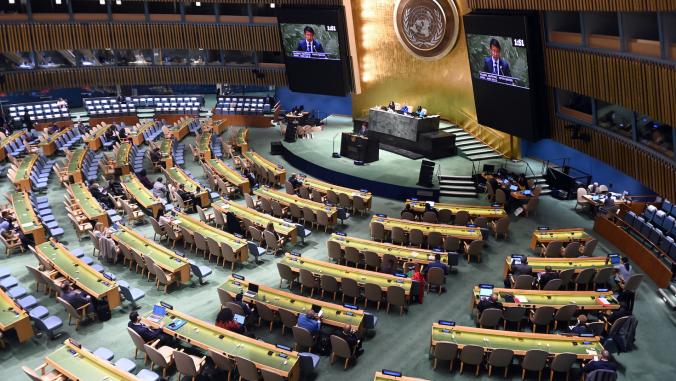Why water needs Collective Action 2.0
<p>Getting the answer to this complicated problem starts with asking the right questions. Here's why the H20 issue needs a radical rethink.</p>

Image by Dan DeChiaro via Flickr
Collective action is one of the key drivers in a water stewardship strategy, and in my opinion one of the two key components in aligning water strategy to fuel business growth. While many collective action frameworks and initiatives have been successful and resulted in tangible "boots on the ground" success the question was raised, what's next?
The topic of collective action came up several times with colleagues at World Water Week in Stockholm, which drew to a close on September 5 after a full week of workshops and events. One discussion started over dinner with colleagues from a multinational beverage company and a leading NGO.
That dinner's big question: If we had a blank sheet of paper, what would the next generation collective action framework look like? We didn't come up with an answer, but we did conclude that an answer to the question is worth pursuing.
The major reason we raised the question — "What does collective action 2.0 look like?" — is the increasingly complex "water ecosystem. The water ecosystem is increasingly complex as a result of the need to address the "wicked problem" of the water crisis. The diversity of attendees at the 2014 Stockholm World Water Week reflected the diversity of the new water ecosystem. How does this diverse ecosystem break out of silos and come together and more effectively address water scarcity, quality and WASH issues?
This infographic illustrates my take on the water ecosystem. We now have NGOs, multinationals, academic institutions, water technology hubs, collective action frameworks and the public sector addressing a range of water related issues, including business opportunities (water technology innovation).
 How do these entities band together to really accelerate solutions to access to safe water, sanitation and hygiene along with securing sustainable and resilient water resources to support economic growth? I believe we need a step forward — version 2.0 of collective action programs — disrupting current thinking and stakeholder relationships, as explained by William Eggers and Paul Macmillan in The Solution Revolution.
How do these entities band together to really accelerate solutions to access to safe water, sanitation and hygiene along with securing sustainable and resilient water resources to support economic growth? I believe we need a step forward — version 2.0 of collective action programs — disrupting current thinking and stakeholder relationships, as explained by William Eggers and Paul Macmillan in The Solution Revolution.
The answer to increasing connectivity and problem solving between these diverse groups may come, in part, from technology solutions.
Will crowdsourcing and prize competition (i.e., X-Prize) accelerate solutions to water challenges? Will the CEO Water Mandate Water Action Hub evolve from a platform to connect stakeholders to driving towards collective investment and technology innovation? Will "exponentials" emerge from the unusual partnerships across the water ecosystem unencumbered by the current silos we have crafted (to clarify, I believe they have served us well)?
I believe the answer to the questions posed above is "yes." The world needs to address complex issues faster and "frictionless." A recent study summarized in the journal Science by the United Nations concluded that "contrary to previous literature, world population is unlikely to stop growing this century. There is an 80 percent probability that world population, now 7.2 billion, will increase to between 9.6 and 12.3 billion in 2100." If current projections (under business as usual conditions) indicate an estimated 40 percent shortfall between supply and demand then what do the new projections reflect with regards to water availability?
Again, I don't believe in business-as-usual projections. However, in order to address projected shortfalls in water we constantly need to rethink how we solve wicked problems. Now is time for a radical rethink. Let's accelerate collective action and water technology innovation.
Top image of water drops on corkscrew by Dan DeChiaro via Flickr.





